Artist concept of the planetary body 2014 UZ224, more informally known as DeeDee. ALMA was able to observe the faint millimeter-wavelength “glow” emitted by the object, confirming it is roughly 635 kilometers across. At this size, DeeDee should have enough mass to be spherical, the criterion necessary for astronomers to consider it a dwarf planet, though it has yet to receive that official designation.
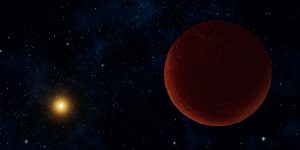
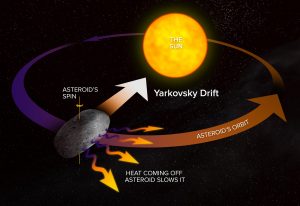
Yarkovsky Effect
Just as the afternoon is the warmest part of the day on Earth, the space rock develops a warm region that radiates infrared light in its maximum amount during afternoon on the asteroid. That outgoing infrared radiation provides a gentle but firm jet-like push to the asteroid. The direction of the asteroid’s spin determines whether “afternoon” is either forward or rearward of its direction of motion. If the hot spot is forward of the direction of motion, the infrared push will slow the asteroid’s orbital speed, and if the hot spot is rearward of the direction of motion, it will speed up the orbital motion. This effect, over time, can make a significant change in the orbit. This is called the Yarkovsky Effect, after the engineer who first identified it.
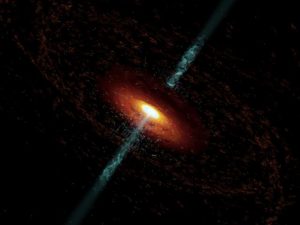
The Active Galactic Nucleus of 3C 120
Still image from an animation depicting the jets emitted by the black hole in galaxy 3C 120.
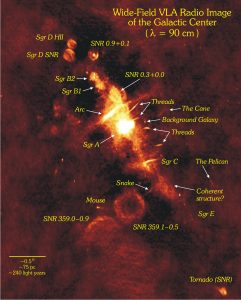
Labeled Map of Our Galaxy’s Center
The diagonal line of bright objects in this image of the heart of our Milky Way Galaxy are all powerful sources of radio waves. The bright center is the home of the supermassive black hole, Sagittarius A*. The dense, bright circles are the nurseries of new, hot stars and the bubbles are the graveyards of exploded, massive stars. The thread-like shapes are not yet understood, but probably trace powerful magnetic field lines. This giant image was assembled from observations made by the Very Large Array (VLA).
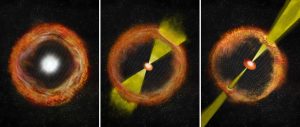
Strange Supernova is ‘Missing Link’ in Gamma-Ray Burst Connection
In an ordinary core-collapse supernova with no “central engine,” ejected material expands outward nearly spherically, left. At right, a strong central engine propels jets of material at nearly the speed of light and generates a gamma-ray burst (GRB). The center panel shows an intermediate supernova like SN 2012ap, with a weak central engine, weak jets, and no GRB.
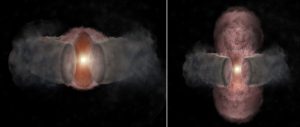
Unfolding Saga of Massive Star Formation
Artist’s conception of the development of W75N(B)-VLA-2.. At left, a hot wind from the young star expands nearly spherically, as seen in 1996. At right, as seen in 2014, the hot wind has been shaped by encountering a dusty, donut-shaped torus around the star and appears elongated.





